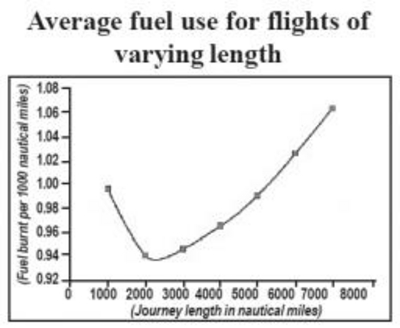Briefing: Some Facts About Aviation

In brief
- Visitors to the UK spend around £11bn a year; of this, £8bn is spent by visitors arriving at one of the five main London airports.
- Passenger kilometres flown from UK airports increased from 125 billion in 1990 to 260 billion in 2000.
- Twenty per cent of the UK's exports now go by air.
- The aviation industry directly provides jobs for more than 180,000 people in the UK and contributes more than £10 billion to GDP.
- One person travelling by air is as environmentally damaging as a car: these are the two most environmentally damaging forms of transport. Carbon dioxide emissions per passenger km for rail travel are typically an order of magnitude lower than air.
- Long-haul freight flights emit approximately one kg of carbon dioxide per tonne km flown; for rail freight, emissions are a factor 20 to 100 times lower; for marine freight, carbon dioxide emissions are a factor or two or more lower again.
- The government has predicted that air traffic will grow in future at an average of 4.25 per cent, implying that, by 2050, more than one billion passengers a year will be travelling by air from Britain.
- The tonnage of freight carried by air is rising at an average of almost 9 per cent and this trend is expected to continue in the long-term.
- On average, only 78 per cent of seats on international flights, and 65 per cent on domestic flights, are filled.

How fuel efficient can aircraft be?
For new aircraft, from concept to end-of-life usually covers a period of 50 years. The aircraft being developed now will therefore still be contributing to climate change in 2050. So how much more fuel efficient will be the aircraft now on the designers' computer screens?
Boeing's Sonic Cruiser - now being designed - is expected to carry 200 to 250 passengers, have a range of 6-9,000 miles, and fly 15 to 20 per cent faster than current passenger aircraft, cutting an hour off the time for every 3,000 miles travelled. But it will be no more fuel efficient than current aircraft.
Even the revolutionary BWB (Bent Wing Aircraft - see picture) proposed by NASA specifically to be fuel efficient will, compared with today's aircraft, cut fuel consumption by only 20 per cent.
Alternative fuels
In the medium-term, one of the most likely routes to more sustainable ground transport is the use of liquid hydrogen manufactured using renewable energy.
However, one of the major benefits of using hydrogen for road transport is that it would replace the combustion engine with the far more efficient fuel cell/electric power system; this advantage would be lost in aircraft, as the hydrogen would have to be used in a conventional combustion jet engine. Hydrogen would also produce more than twice the water vapour which, at high altitudes, itself adds to global warming. In total, the radiative impact of a hydrogen-fuelled aircraft would probably be at least 10 times greater than for kerosene.
Bio-ethanol has been suggested as a possible aviation fuel. However it has a lower energy density than kerosene, requiring aircraft to carry more fuel; it too would increase water vapour emissions.
So fossil fuel-based kerosene is likely to remain the fuel for aircraft for the foreseeable future.